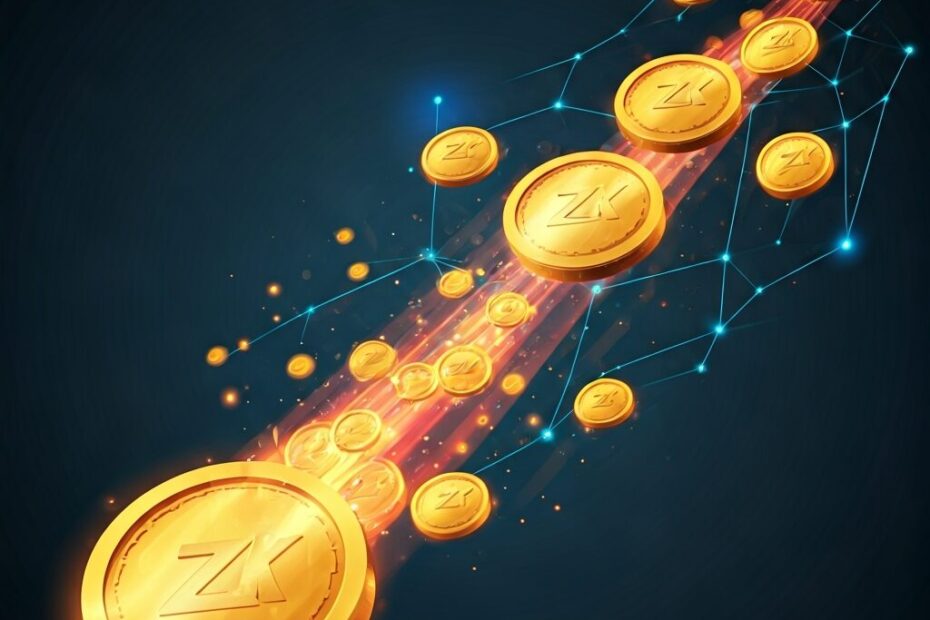ZKsync Launches Six-Month Staking Program With 37.5M ZK Allocation
John: Hey everyone, I’m John, your go-to tech blogger at Blockchain Bulletin, where I break down Web3, metaverse, and blockchain topics into easy-to-grasp pieces. Today, we’re diving into ZKsync’s recent launch of a six-month staking program that allocates 37.5 million ZK tokens—it’s a big step for their ecosystem, rewarding users and pushing toward more decentralized operations. If you’d like a simple starter guide to exchanges, take a look at this beginner-friendly overview.
Lila: That sounds exciting, John! Readers are buzzing about staking in crypto, especially with ZKsync being a Layer 2 solution on Ethereum. Can you start by explaining what ZKsync is and why this program matters?
What is ZKsync?
John: Absolutely, Lila. ZKsync is a Layer 2 scaling solution built on Ethereum, using zero-knowledge proofs—those are cryptographic methods that verify transactions without revealing all details—to make Ethereum faster and cheaper. It launched its mainnet, called ZKsync Era, back on 2023-03-24, and has been growing steadily with updates like the Atlas upgrade in recent months.
Lila: Zero-knowledge proofs? That jargon trips me up—what does it mean in simple terms?
John: Think of it like proving you know a secret without saying what the secret is (a quick aside: it’s like showing you solved a puzzle without revealing the steps). In ZKsync, it bundles many transactions into one proof, reducing costs on Ethereum. Currently, ZKsync handles over 100 transactions per second, way more than Ethereum’s base layer.
The Staking Program Basics
Lila: Got it. Now, about this new staking program—what exactly is it, and when did it launch?
John: The program is a six-month pilot approved by the ZKsync community, starting on 2025-11-04, as per recent reports. It allocates 37.5 million ZK tokens to reward active token holders who stake their ZK, helping secure the network as it moves toward decentralized sequencing— that’s when transaction ordering is handled by multiple parties instead of one central entity.
Lila: Staking sounds like locking up tokens to earn rewards. How does this fit into ZKsync’s past developments?
John: In the past, ZKsync focused on scaling with features like the ZK Stack framework released on 2023-06-26 for building custom chains. Currently, this staking adds real economic utility to the ZK token, including plans for token burns and buybacks announced alongside it, which have boosted the token’s price by 65% in the last week.
How to Participate
Lila: Practical question: How can someone get involved in this staking program?
John: First, you’ll need ZK tokens, which you can acquire on exchanges supporting them. Then, head to the official ZKsync platform or compatible wallets to stake—it’s straightforward, but always use the official site to avoid scams. Remember, participation involves locking tokens for the program’s duration, ending around 2026-05-04.
Lila: Any tips for beginners?
John: Sure, here’s a quick list of do’s and don’ts:
- Do: Verify the staking interface on zksync.io to ensure it’s legitimate.
- Do: Start with a small amount to test the process.
- Don’t: Rush in without understanding gas fees on Ethereum.
- Don’t: Ignore wallet security—use hardware wallets if possible.
John: And a caution: Staking regulations vary by jurisdiction, so check local laws and official docs before participating.
Benefits and Risks
Lila: What are the upsides for stakers, and any downsides?
John: Benefits include earning a share of the 37.5 million ZK rewards over six months, plus supporting the network’s shift to decentralized operations, which could improve security. Currently, with the tokenomics upgrade including burns—permanently removing tokens from circulation—it aims to increase scarcity and value.
Lila: Sounds rewarding. What about risks?
John: Risks include token price volatility, as seen in crypto markets, and potential slashing—losing some staked tokens—if rules aren’t followed, though ZKsync’s program is designed to minimize that. In the past, similar programs in other networks have faced smart contract bugs, so sticking to audited protocols is key.
Current Landscape and Updates
Lila: How does this compare to other staking programs out there?
John: Compared to Ethereum’s own staking, which requires 32 ETH and focuses on consensus, ZKsync’s is more accessible with smaller amounts and targets Layer 2 growth. Recent news from 2025-11-04 shows ZKsync integrating with projects like Chainlink for better data feeds, enhancing its ecosystem.
Lila: Any recent buzz on social media?
John: Posts on X from the official ZKsync account highlight the token’s economic utility push, aligning with this launch. It’s generating positive sentiment, but remember, social media isn’t always conclusive—always cross-check with official sources.
Looking Ahead
Lila: What’s next for ZKsync after this program?
John: Looking ahead, the program supports transitions like interop features and Prividiums for privacy, expected in production soon. By 2026, we might see full decentralized sequencing, building on this pilot. It’s all about creating incorruptible financial infrastructure, as ZKsync puts it.
Lila: That gives a clear path forward. Any final thoughts on why this matters?
John: This launch marks a maturation point for ZKsync, blending community governance with practical incentives. It encourages long-term holding and network health, which could attract more developers and users. And if you’d like a bit more background on exchanges, you might enjoy this global guide.
Lila: Thanks, John—readers now have a solid grasp on this staking program and how it fits into ZKsync’s journey. Stay informed and engage safely!
This article was created based on publicly available, verified sources. References:
- Original Source
- ZKsync continues 65% weekly rally on burn, staking, buybacks
- ZKsync: The Elastic Network
- Matter Labs Unveils Atlas Upgrade for ZK Stack
